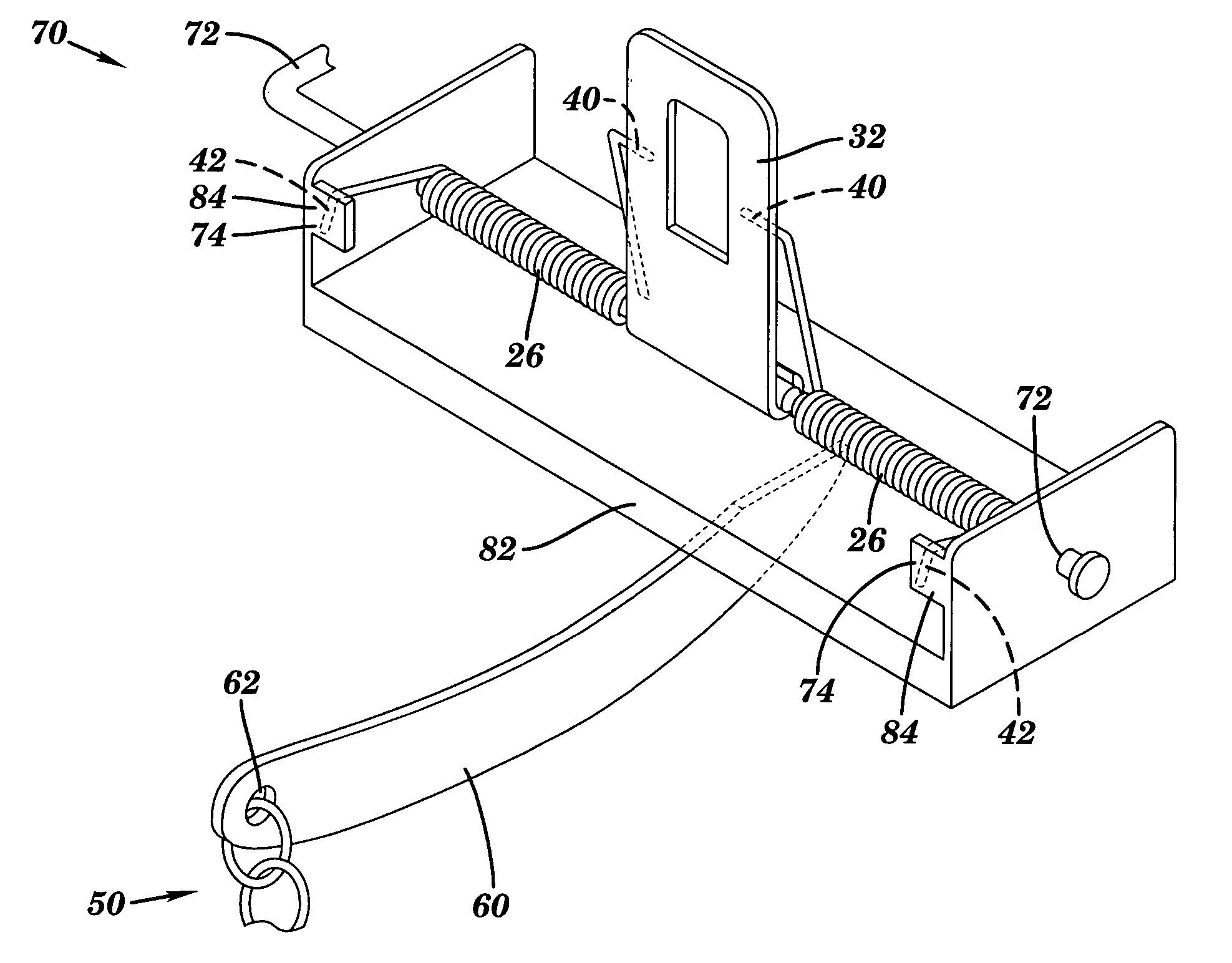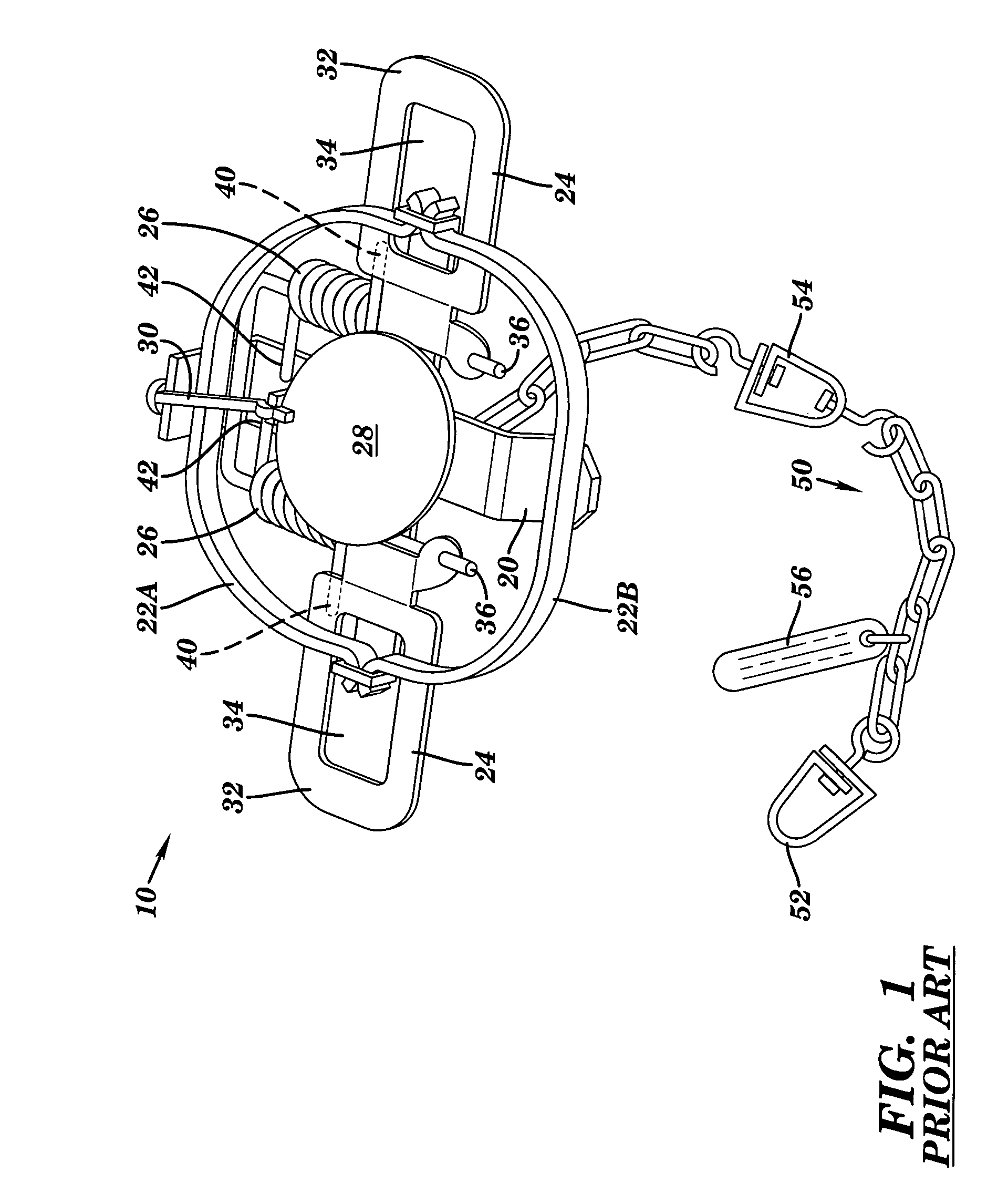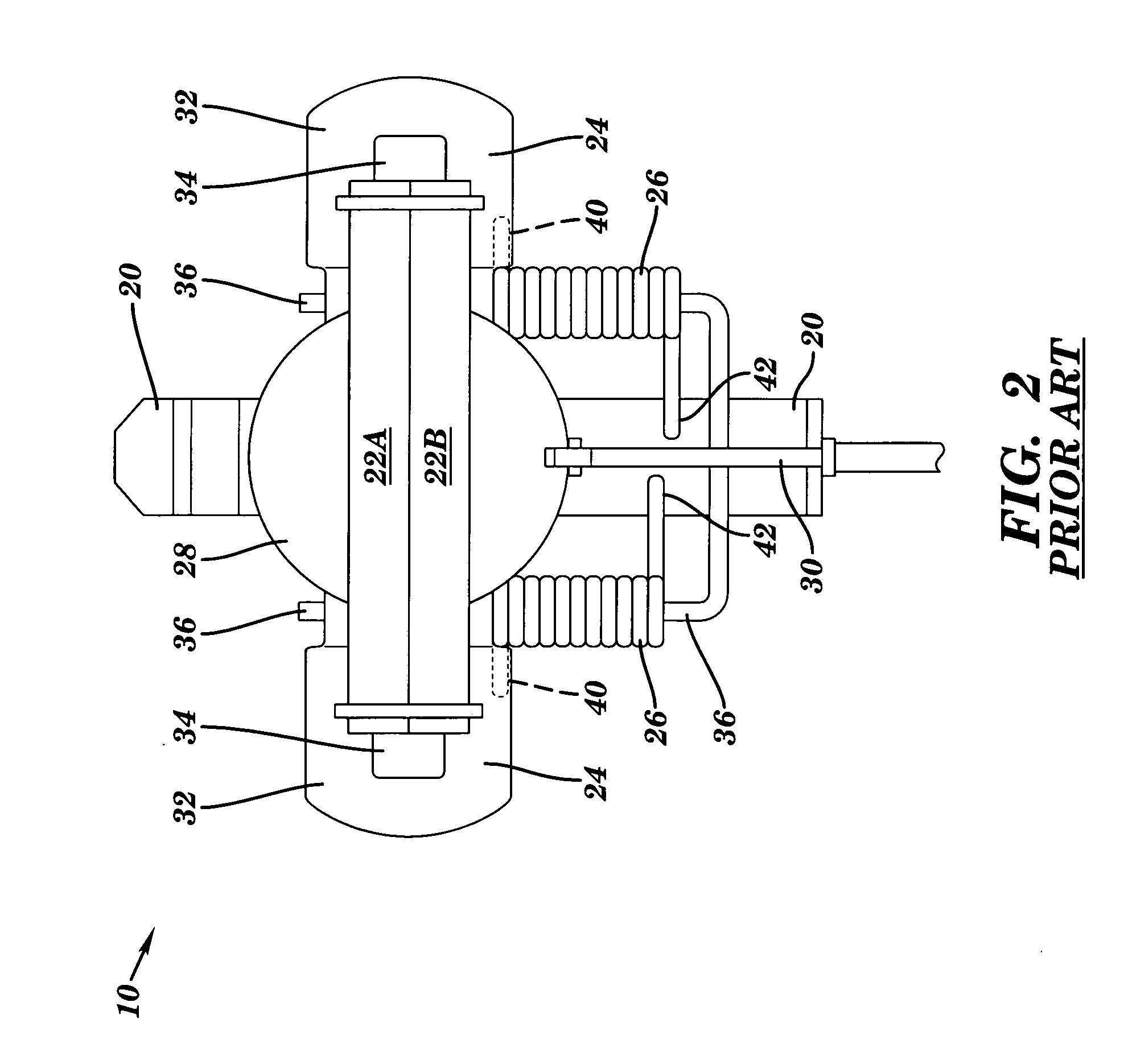Trap with biasing device and force applying levers and related methods
- Summary
- Abstract
- Description
- Claims
- Application Information
AI Technical Summary
Benefits of technology
Problems solved by technology
Method used
Image
Examples
Embodiment Construction
[0034] Force Applying Lever Assembly
[0035]FIGS. 5 and 6 show a force applying lever assembly 70 according to the invention. Force applying lever assembly is adapted for use with trap 10 (FIGS. 1-4) for ensnaring an animal and includes a force applying lever 60 for increasing the biasing force of the trap. Force applying lever assembly 70 also has a base coupler 72 for pivotally coupling force applying lever 60 to base 20 of trap 10. Base coupler 72 may be adapted to couple using biasing device pin 36 of trap 10 (FIGS. 1-4), a screw, hinge, ball and socket, pin or any other device for pivotally coupling now known or later developed in the art. Base coupler 72 allows force applying lever 60 to pivot with respect to trap 10 as will be described in more detail below.
[0036] Force applying lever assembly 70 also has a biasing device coupler 74 for coupling force applying lever 60 to biasing device 26. Biasing device coupler 74 may include a u-shaped groove 82 as illustrated in FIG. 5, a...
PUM
 Login to View More
Login to View More Abstract
Description
Claims
Application Information
 Login to View More
Login to View More - R&D
- Intellectual Property
- Life Sciences
- Materials
- Tech Scout
- Unparalleled Data Quality
- Higher Quality Content
- 60% Fewer Hallucinations
Browse by: Latest US Patents, China's latest patents, Technical Efficacy Thesaurus, Application Domain, Technology Topic, Popular Technical Reports.
© 2025 PatSnap. All rights reserved.Legal|Privacy policy|Modern Slavery Act Transparency Statement|Sitemap|About US| Contact US: help@patsnap.com



